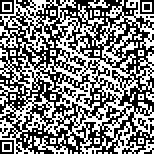| 本文已被:浏览 2835次 下载 2921次 |

码上扫一扫! |
|
|
| 利用微卫星标记分析军曹鱼养殖群体的遗传多样性 |
|
李伟强1, 陈刚1, 马骞1, 黄建盛1, 施钢1, 潘传豪1, 周晖1, 谢瑞涛1,2, 张健东1, 汤保贵1
|
|
1.广东海洋大学水产学院 湛江 524088;2.广东恒兴集团有限公司 湛江 524000
|
|
| 摘要: |
| 利用12个微卫星标记对北海(BH)、陵水(LS)、硇洲(NZ)、徐闻(XW)和三亚(SY) 5个军曹鱼(Rachycentron canadum)养殖群体进行遗传多样性分析。结果显示,12对微卫星引物在5个军曹鱼养殖群体中共检测到129个等位基因。各养殖群体的平均等位基因数为3.833~6.750,平均有效等位基因数为2.284~3.645,平均观测杂合度和平均期望杂合度分别为0.481~0.635和0.533~0.681,平均多态信息含量为0.463~0.630;哈迪-温伯格平衡检测结果显示,各群体在多个微卫星位点上均显著偏离平衡(P<0.05);军曹鱼养殖群体间的遗传分化指数(Fst)为0.055~0.150,遗传距离(D)为0.240~0.635,其中,BH和NZ的Fst最大(0.150),D最远(0.635);AMOVA分析表明,军曹鱼养殖群体的84%遗传变异来自于个体之间;基于Nei´s遗传距离构建的UPGMA系统进化树显示,BH和SY聚为一支,LS和XW聚为一支,两支聚为一支后与NZ聚为一支。研究结果将为军曹鱼种质资源保护和改良等提供科学的数据参考。 |
| 关键词: 军曹鱼 养殖群体 微卫星 遗传多样性 |
| DOI:10.19663/j.issn2095-9869.20190617001 |
| 分类号: |
| 基金项目: |
|
| Genetic Diversity in Five Cultured Population of Cobia (Rachycentron canadum) Using Microsatellite Markers |
|
LI Weiqiang1, CHEN Gang1, MA Qian1, HUANG Jiansheng1, SHI Gang1, PAN Chuanhao1, ZHOU Hui1, XIE Ruitao1,2, ZHANG Jiandong1, TANG Baogui1
|
|
1.Fisheries College of Guangdong Ocean University, Zhanjiang 524088;2.Guangdong Hengxing Group Co., Ltd., Zhanjiang 524000
|
| Abstract: |
| Cobia, Rachycentron canadum, the only species in the family Rachycentridae, is a candidate for cage culture in tropical and subtropical waters. Taiwan was the first to cage cobia in the early 1990s, and culturing of cobia has also been developed in Southeast Asia and other areas. Understanding the genetic diversity of cultured populations is important for the sustainable development and management of aquaculture. In the present study, 12 polymorphic microsatellite loci were selected to investigate and assess genetic diversity in five cultured populations of cobia from Beihai (BH), Lingshui (LS), Naozhou (NZ), Xuwen (XW), and Sanya (SY). As a result, 129 alleles were detected in the five populations. The mean number of alleles was between 3.833 and 6.750, the mean number of effective alleles ranged from 2.284 to 3.645, the mean of observed heterozygosity and expected heterozygosity was between 0.481 and 0.635, and 0.533 and 0.681, respectively, and the mean polymorphism information content ranged from 0.463 to 0.630. The population deviated significantly from a Hardy-Weinberg equilibrium at multiple microsatellite loci (P<0.05). Analysis of genetic differentiation indicated that the Fst range was from 0.055 to 0.150 and the genetic distance (D) range was from 0.240 to 0.635. BH and NZ had the highest Fst (0.150) and the highest D (0.635). The results of an analysis of molecular variance showed that 84% of the genetic variations were within cultured populations, and 16% were among cultured populations. A phylogenetic analysis using the unweighted pair group method with arithmetic mean and based on Nei’s genetic distance showed that one cluster comprising BH and SY, and the other cluster comprising LS and XW formed a branch, which was then clustered with NZ. These results provide data for further protection and improvement of the germplasm resources of cobia. |
| Key words: Rachycentron canadum Culture population Microsatellite Genetic diversity |